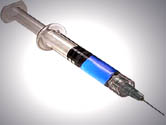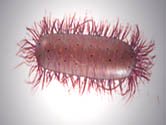Indoor Airborne Disease
 |
 |
 |
A developing concern in the indoor air quality community is airborne disease.
In the global political environment of the 21st century, no threat can considered remote.
I consider a pandemic, a disease epidemic on a global scale, a real possibility.
Air-Purifier-Power is not a source for the treatment of disease, but air purifiers might become even more popular if this scenario plays out.
The focus here is on airborne microorganisms and the technology available for ordinary residential air disinfection.
Humans lived indoors, in caves, tents, and huts, 500,000 years ago.
They lived lives properly described as nasty, brutish, and short.
Microorganisms and diseases played a big part, but transmission was slow, generally requiring face to face contact.
Sunshine and temperature extremes outdoors limited pathogen survival.
This combined with limited human mobility to keep outbreaks local.
Agriculture and the domestication of animals began the urbanization process, and human social evolution set the stage for the epidemics of recorded history: the fourth horseman of the Apocalypse.
For over two thousand years disease kept population growth in check.
Fatality levels up to 50% were common.
The "Spanish" influenza epidemic of 1918, which killed 20 to 50 million, was supposed to be the last of the big air borne diseases.
Science, we were told, had solved the mysterious origins of these epidemics.
Newly discovered antibiotics and other treatments would vanquish the bugs.
Henceforth, medical science would concern itself primarily with chronic degenerative diseases caused by affluence.
Antibiotics and Demographic Change
This "health transition" had significant effects: people began to live longer.
We survived childbirth and other traumas.
Surgery became increasingly sophisticated.
More individuals remained alive with compromised immunity.
The optimism of the 1950's was based on false assumptions about our environment and the disease organisms.
Microbes have short generations, and so can evolve very rapidly, even compared to human technology.
Mutations and deliberate tinkering with DNA have changed the character of the epidemic threat.
Drug resistant and "smarter" microbiologicals continue to emerge, challenging a human technocracy straining at its limits.
Geographic barriers fell in the 20th century, as globalism began to achieve its goals.
In historic epidemics, an infectious disease might take 2 to 3 years to travel across Europe.
Typically, seaports would be epicenters.
Each disease would have a rate of spread dependent on its incubation period: longer incubation meant infected persons could walk or sail further before falling ill.
 |
 |
 |
Global Economy Favors Airborne Disease
As an interconnected global economy has grown, international travel and immigration have grown significantly.
We think of the poor housing and crowded living conditions of the third world when disease is mentioned.
But one modern indoor environment gives new meaning to the "airborne" aspect of the new disease: the aircraft cabin.
People in airplanes sit in closer proximity to strangers, for a longer period of time, than would be tolerated elsewhere.
An aircraft cabin is not like surface modes of transport, it is pressurized and sealed.
Even with cabin air filtration, bioaerosols can circulate.
We now have flight attendants advising us to wear handkerchiefs as masks during the flight.
As the SARS debacle demonstrated, diseases can now fly across the globe in hours, not years.
The immigration and travel populations are joined by huge numbers of commuters in every urban core.
These human traffic patterns will make the 1918 rate of contagion seem like a crawl.
Hospitals are already reservoirs of disease; in the well publicized Ebola outbreaks it was hospitals the virus burned through first.
When the real epidemics come, hospitals will be overrun and soon become the epicenters.
An air purifier, which requires functioning electrical power to work, may never save my life.
But I want to be protected when disease is airborne.
Air Purifiers at Amazon
Air Purifiers at Amazon.com.
 |
 |
 |
Site Navigation
HOME - Real Air Purifier Reviews
